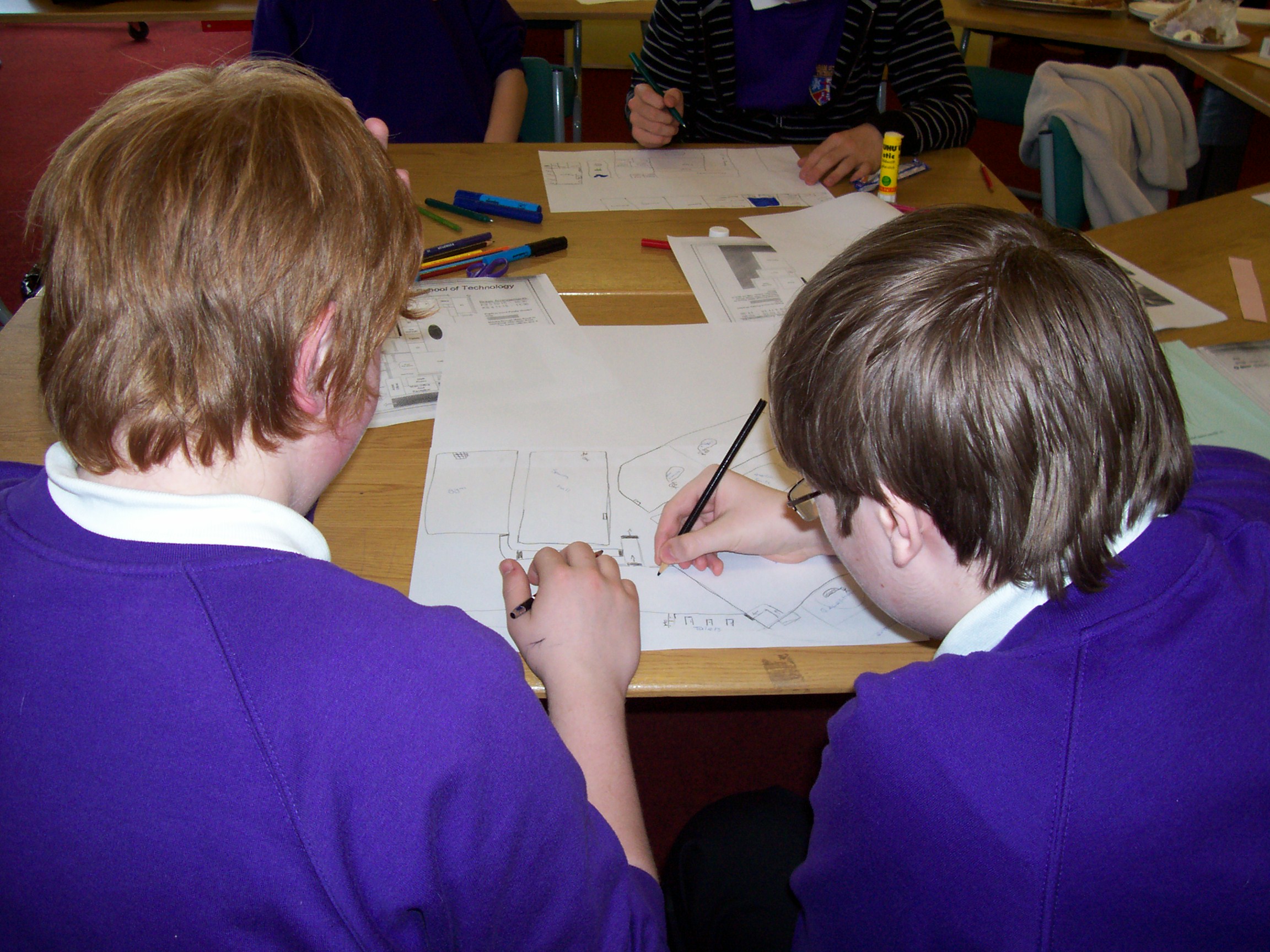In ‘Ideas for an Incoming Government’ no. 14, Dr Pam Woolner from the School of Education, Communication and Language Sciences argues that with pupil numbers rising, our schools are under pressure, and our school buildings need to catch up. Her idea is to make working with school students, staff and the wider community a priority in tackling the problem.
What’s the problem?
Our school estate is not fit for purpose. Although this government and the previous Labour administrations have overseen new school building, it was long overdue and has not got anywhere near renewing or refurbishing all the schools in need. It has also led to very uneven provision: schools built over the last 150 years that have been designed for disparate understandings of education.
Meanwhile, student numbers are generally rising, putting pressure on this already-strained infrastructure. For the first time in decades, the UK is experiencing a sustained increase in birth rate which will translate into steady increases in school numbers. As Sarah Healey (then Director, Education Funding Group, DfE) commented in 2013, “this is not a very short temporary bulge […] so it will continue to be a challenge.” (Westminster Education Forum, 16.1.13).
This is concerning because there is an established, if not entirely understood, link between the quality of the school space and student outcomes. In particular, research shows that there are clear negative consequences of inadequate school buildings. Focused research has found direct effects on learning of specific physical problems including noise, high and low temperatures, poor air quality and limited learning space. Other studies reveal correlations between measures of school building and classroom quality with student outcomes including attitude, attendance and attainment. We can see how a poor school environment might contribute to a spiral of decline: this could involve declining student attitudes, increases in poor behaviour, reduced well-being and attendance, lowered staff morale and difficulties in staff retention.
Yet research into the physical environment of education also demonstrates that there is not a single perfect or ideal setting for learning. Although spacious, well-ventilated classrooms with good acoustics and temperature controls will tend to be beneficial, the suitability of other aspects of the school building will depend on what the school community wants to do: collaborative learning in groups, hands-on science, musical performance and sport all make particular, sometimes conflicting, demands on space.
The solution
There is some evidence that in effective schools, staff tend to engage with the physical environment and attempt to make it fit their needs. Other research suggests an important role for students in such evaluation and adaptation activities. In these processes, everyone comes to understand the helps and hindrances of their particular building much better and are able to make better use of it.
The evidence base reveals the negative effect of poor school premises, but it does not provide priorities for fixing them, and shows that there is no ideal to aim for. We need to understand the intentions and needs of the school community to design them an appropriate setting.
This all implies a necessity of actively involving school students, staff and the wider community in any redesign or rebuilding, helping them to think collaboratively about exactly what their requirements are. There is expertise among architecture and design professionals to make such participation happen, but it needs to be a central requirement of rebuilding and refurbishment processes to ensure that it does. Unfortunately, it is this element of participation that is being determinedly left out of the current government’s funding arrangements for school rebuilding.
An incoming government needs to ensure that the understandings which school users have of education in their settings are brought together and developed to drive decisions in re-builds, re-designs and refurbishments. Ultimately, this is the most productive way to address the shortcomings of the school estate, which if ignored will detrimentally affect the education of the citizens of tomorrow.
The evidence
Bakó-Birób, Zs., Clements-Croomea, D.J, Kochhara, N., Awbia, H.B. and Williams, M.J. (2012) ‘Ventilation rates in schools and pupils’ performance’, Building and Environment, 48: 215-23.
Barrett, P., Zhang, Y., Moffat, J. Kobbacy, K (2013) A holistic, multi-level analysis identifying the impact of classroom design on pupils’ learning. Building and Environment, 59: 678-689.
Durán-Narucki , V. (2008). School building condition, school attendance, and academic achievement in New York City public schools: A mediation model. Journal of Environmental Psychology 28: 278-286.
Flutter, J. (2006). ‘This place could help you learn’: student participation in creating better learning environments. Educational Review 58(2): 183-193.
Maxwell, L.E. (2003) Home and School Density Effects on Elementary School Children: The Role of Spatial Density Environment and Behavior 35: 566 – 577
Uline,C. L. Tschannen-Moran, M., and DeVere Wolsey, T. (2009).The walls still speak: The stories occupants tell. Journal of Educational Administration, 47(3):400–426.
Woolner, P. (2015) (Ed.) School Design Together, Abingdon: Routledge
Woolner, P.and Hall, E. (2010). Noise in Schools: A Holistic Approach to the Issue, International Journal of Environmental Research and Public Health 7(8): 3255-3269.
Woolner, P., Hall, E., Higgins,S., McCaughey, C., Wall, K. (2007a) A sound foundation? What we know about the impact of environments on learning and the implications for Building Schools for the Future. Oxford Review of Education, 33(1): 47-70.

